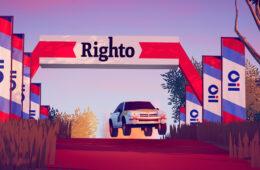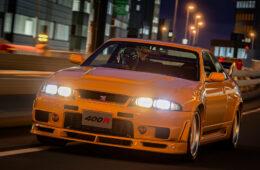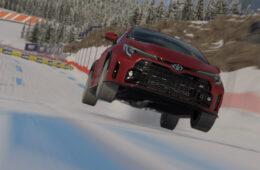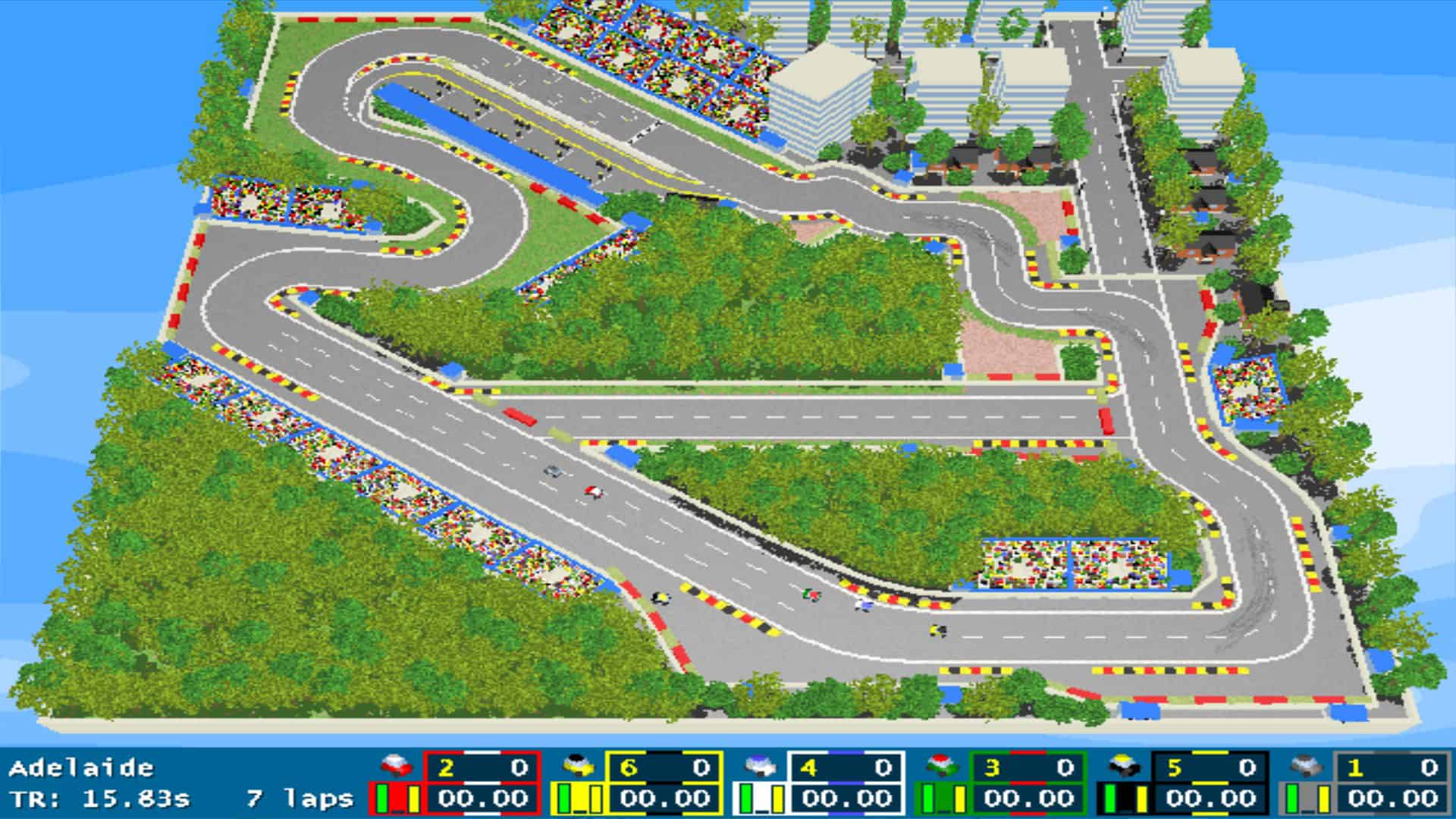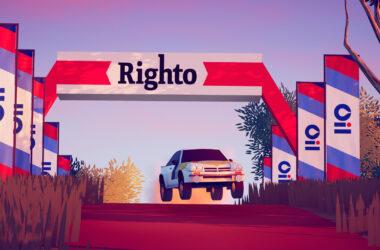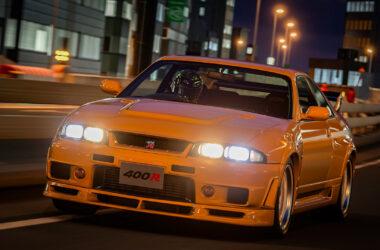With Circuit Superstars making a splash recently, we at Traxion thought it would be a great opportunity to jump back in time to 2002. Why you may ask? GeneRally!
Released 19 years ago, GeneRally was one of the first cute-but-serious racing games that took the internet racing world by storm. A top-down arcade feel, unprecedented modding capabilities and, crucially, both online and offline hotlap add-ons made GeneRally a rite of passage for racers of a certain age.
Initially launched as a public beta from Finnish students and brothers Hannu and Jukka Räbinä, GeneRally was a homage to the arcade classic ‘Slicks ‘n’ Slide’. Designed to be simple to pick up and play, you could select from 16 initial tracks and several vehicles to go racing with.
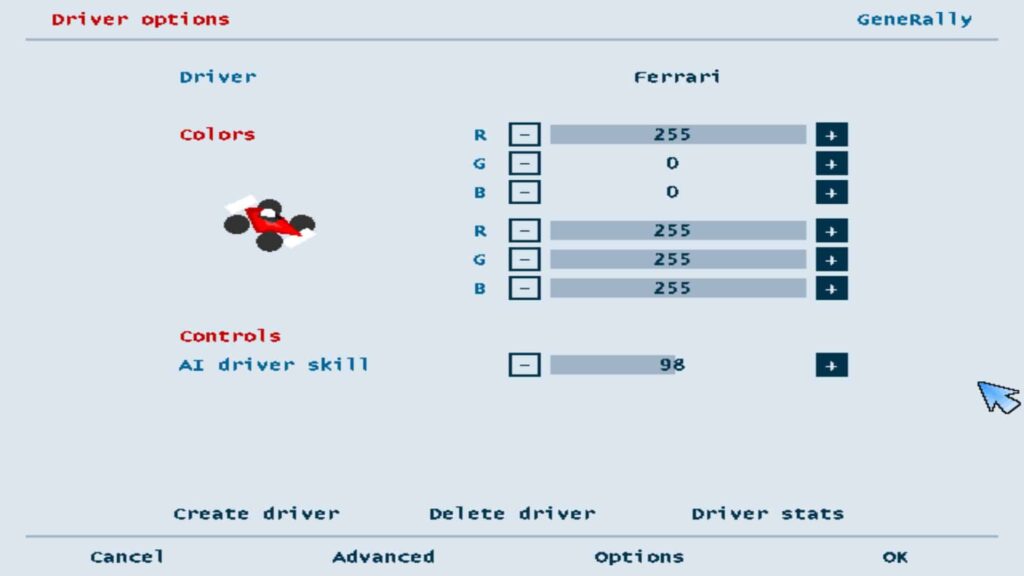
Choose from 1-255 laps, kilometres or minutes for the race. Add in fuel, tyre wear, damage and pitstops – all of which you could adjust using a percentage scale. Pick your AI opponents and adjust their colours and stats too. Everything in GeneRally was so very customisable out the box.
The game was deceptively easy to get to grips with. Using the arrow keys on your keyboard (controllers came years later), your cars would have incredible grip at peak performance. However, if you were like me and wanted the full experience, feathering those arrow keys to scrub speed while turning became key. Hit a car or a barrier and damage would affect your top speed and make your car zig-zag slightly too.
Pitstops would repair the damage and you could also refuel and take on new tyres. No one had really bridged the gap between your Ivan Ironman Super Off-Road’s and your Grand Prix 3s very well and yet here you could tweak it for the best of both worlds. Run a single race or build a championship, with your custom points structure and grid conditions. We don’t even get that today.
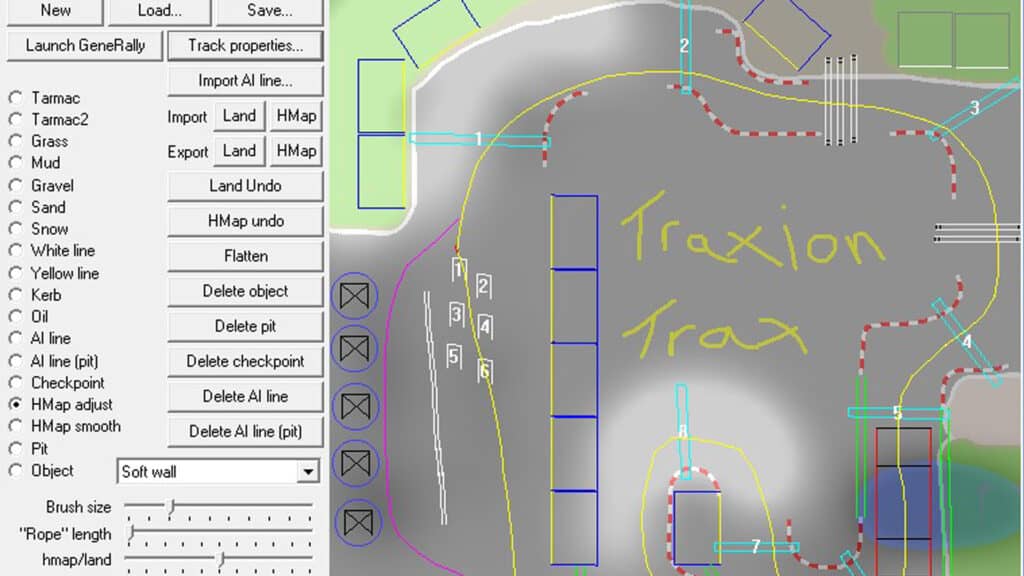
The jewel in the crown upon initial release was the bundled track editor that works just like Microsoft Paint. You can sketch out your terrain, add in objects by clicking and rotating them into place and plan out a track within your square world. Looking for a more 3D look? Simply adjust the view. Wanted a giant hill or water splash? Adjust the landscape or change the water level.
You can create something drivable in around five minutes with ease. Track files and bespoke vehicle files were tiny so you could email or host them anywhere. It is rare, even today, to find an editor that gives such instant results so quickly without neededing the massive brainpower of Stephen Hawking.
Once you’ve created your track, the last things to complete were adding in your checkpoints to ensure laps were valid and adding in your AI driving line. If you understood racing lines then this would be fun, but even eyeballing it worked well enough to make the single-player experience worthwhile.
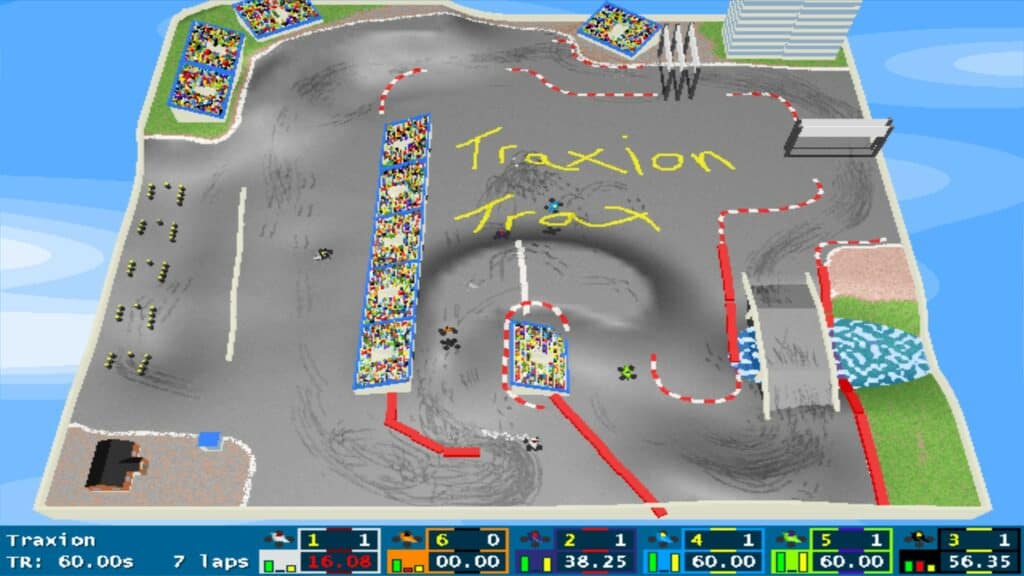
Painless modding capabilities also meant that GeneRally thrived in the early days of the Wild West of internet creativity, which I refer to as the halcyon days of ‘if it doesn’t exist, I’ll build it myself’.
Each race you completed saved a replay file and it wasn’t long before hotlap leagues were set up to run events. A schedule would be made, you’d download the track and car for that event, run your race and send your replay to the admin. The admin would check off the replay (ensuring you hadn’t cheated) and then with the excellent VCR Merge tool, you could then combine the top 6 humans together into a single replay. This was then posted online for the league to watch back!
This might sound quite alien to younger racers today but back in 2002, unless you had a LAN party going this was as close to online multiplayer – and therefore competitive sim racing – as anyone could get.
Allow me to don some rose-tinted glasses for a moment. GeneRally introduced me to competitive hotlapping and racing. It was my first stepping stone into what would become the sim racing world. I also ran the GeneRally Alpha championship.
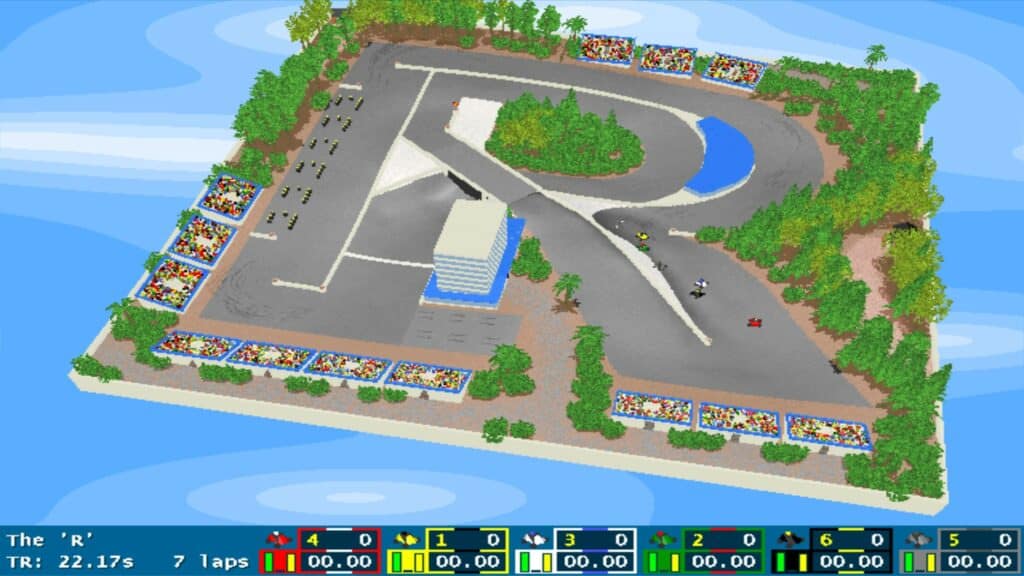
For 26 weeks, we raced around tracks designed on each letter of the alphabet. 32 drivers took part in the championship and I had built a Geocities website for it all. Running a league taught me a lot about being an organiser, even for something so small and niche – a great experience.
GeneRally’s community would also go on to pioneer driver leaderboards as leagues could sign up to a World Ranking system. Its lofty goal was to make a giant database of all the official leagues and build legends within the community by weighting league results to find the best racer. Your profile became a badge of honour and pride – a little like your stat profiles in RaceRoom or GT Sport.
GeneRally was at the forefront of many standards that we just take for granted as part of today’s sim racing makeup. For that, I’m truly thankful and am delighted to say the game still holds up today.
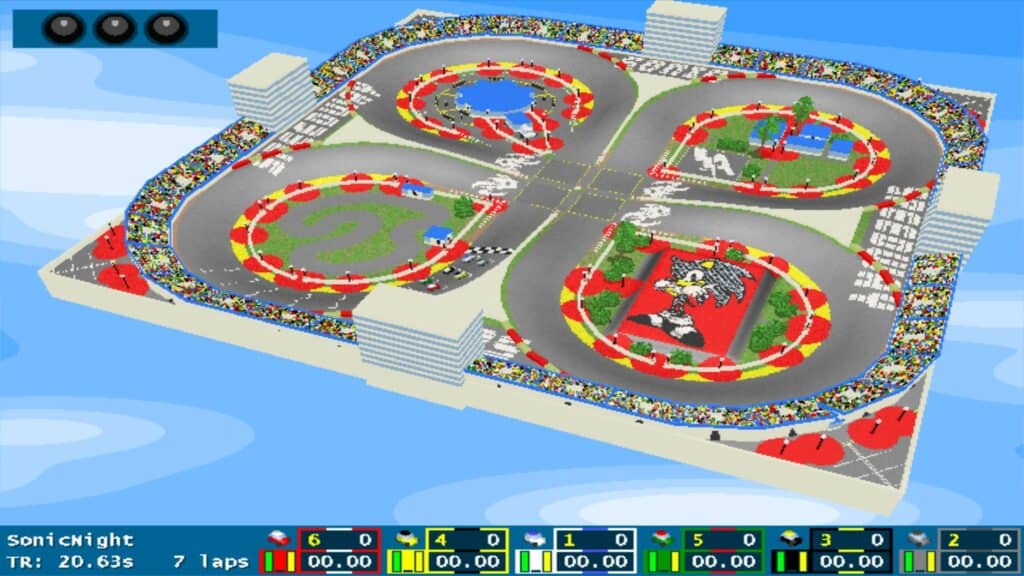
This is why it is both a blessing and a misguided slight to label racing games that try to mix cute and depth as GeneRally clones. It is something I’ve seen thrown at Circuit Superstars in particular an awful lot. In the way how top-down racers with weapons are labelled Micro Machines clones – if they defined the genre – it’s difficult to see past that at face value.
It’s clear Circuit Superstars takes inspiration from GeneRally. Spot the funny pit crews in both games for starters. Both will include multi-class races, terrain changes, damage and customisation. What Circuit Superstars is able to do is use the 19 years of technology advancements and quality of life features to its advantage, breaking free of previous limitations and exploiting those gains.
Three huge differences stand out for me between the two games. Firstly, we aren’t limited to hotlaps any more. We can go racing with others, both locally and online. Secondly, tracks are no longer limited to a single screen. With GeneRally, to make bigger tracks you’d have to zoom out until you could barely see a thing. Circuit Superstars has dynamic cameras and larger venues.
The third difference is that tyre wear and fuel were simple calculations in GeneRally. Racing on Circuit Superstars brings in the nuance of lift and coast alongside being easy on tyres. How you drive really affects those stats instead of it being tied to distance travelled. It is those three things so far that has me chomping at the bit each time an update comes to the game.
Progress for GeneRally came in its most recent release in 2018, the first since 2012. A sequel was put onto Kickstarter in 2014, sadly this wasn’t successful. The campaign flew under the radar for many and while apparently the project is still in development, I’ve not heard anything for years.
I still hope that one day GeneRally 2 will pop out and surprise us from nowhere. I got lost for several hours diving back into the original for this article, gleefully and willingly just having fun. GeneRally was a rare lightning-in-a-bottle moment that has a special place in my heart and the racing community. I hope that Circuit Superstars can make a similar impression.


